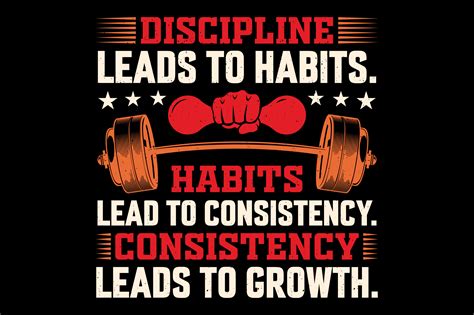Embracing the Unpredictability of Life
Life, by its very nature, is a series of ups and downs. Whether you’re striving for a new personal best in the gym or meticulously managing your finances, setbacks are an inevitable part of the journey. The true measure of success isn’t the absence of failure, but rather our ability to bounce back, adapt, and grow stronger from adversity. This capacity to recover quickly from difficulties is known as resilience, and it’s a skill that can be cultivated and strengthened over time.

Understanding Resilience: More Than Just Bouncing Back
Resilience is often described as bouncing back, but it’s more profound than that. It’s about developing the mental and emotional fortitude to not just return to your original state, but to emerge from challenges with greater wisdom, strength, and an evolved perspective. It involves self-awareness, the ability to regulate emotions, a problem-solving orientation, and a strong sense of purpose. When faced with a fitness plateau, an injury, a sudden job loss, or an unexpected financial crisis, a resilient mindset allows you to see the situation not as a dead end, but as a curve in the road.
Navigating Fitness Failures with Grace
In the realm of fitness, setbacks can manifest in many forms: a missed workout streak, an injury that sidelines you for weeks, a plateau in progress, or failing to meet a race goal. These moments can be incredibly demotivating, leading to self-doubt and the temptation to give up. A resilient mindset helps you:
- Reframe Failure: See a missed goal not as a personal failing, but as data. What went wrong? What can be learned?
- Focus on Process, Not Just Outcome: Celebrate consistent effort, showing up, and small improvements, rather than solely fixating on the end result.
- Practice Self-Compassion: Treat yourself with the same kindness and understanding you would offer a friend. Recognize that everyone experiences setbacks.
- Seek Adaptations: If an injury occurs, explore alternative exercises, focus on recovery, or work on other fitness components that are still accessible.

Building Financial Fortitude in Turbulent Times
Financial setbacks can be particularly stressful, impacting daily life and future security. These might include job loss, unexpected medical bills, market downturns, or significant economic shifts. Cultivating financial resilience involves both practical strategies and a robust mental approach:
- Emergency Fund: A critical buffer that provides peace of mind and time to recover without making rash decisions.
- Financial Literacy: Understanding personal finance, budgeting, and investment basics empowers you to make informed decisions and adapt to changing circumstances.
- Diversification: In investments and income streams, to mitigate risk.
- Patience and Long-Term Perspective: Financial markets fluctuate. A resilient investor understands that dips are often temporary and maintains a long-term view.
- Problem-Solving Mentality: Instead of panic, ask: What resources do I have? What steps can I take to improve my situation?

Core Pillars of a Resilient Mindset
Building resilience isn’t a one-time fix; it’s an ongoing process supported by several key pillars:
- Self-Awareness: Understanding your emotional triggers, strengths, and weaknesses helps you anticipate reactions and develop coping mechanisms.
- Positive Self-Talk: Challenge negative thoughts and replace them with constructive, empowering affirmations.
- Adaptability and Flexibility: The ability to adjust plans and expectations when circumstances change is crucial.
- Growth Mindset: Believing that your abilities and intelligence can be developed through dedication and hard work. See challenges as opportunities to learn.
- Strong Support System: Leaning on friends, family, mentors, or professionals provides emotional support and practical advice.
- Mindfulness and Stress Management: Practices like meditation, deep breathing, and regular exercise help manage stress and maintain mental clarity.

Actionable Steps to Cultivate Resilience
Ready to strengthen your resilience muscle? Here are some practical steps:
- Practice Realistic Optimism: Acknowledge the reality of a difficult situation, but maintain a hopeful outlook for the future.
- Set Small, Achievable Goals: Break down large challenges into manageable steps. Each small success builds confidence.
- Learn from Experience: After a setback, reflect on what happened, what you learned, and how you can apply those lessons moving forward.
- Maintain Physical Well-being: Adequate sleep, nutrition, and exercise are fundamental for mental and emotional strength.
- Develop Problem-Solving Skills: Instead of dwelling on problems, actively brainstorm solutions and take action.
- Seek and Offer Support: Being part of a community and helping others can significantly enhance your own sense of purpose and resilience.

Conclusion: Resilience is Your Superpower
Building a resilient mindset is not about avoiding pain or disappointment; it’s about developing the inner resources to navigate them effectively. Whether facing a fitness failure that tests your dedication or a financial setback that challenges your stability, your ability to adapt, learn, and persevere will be your greatest asset. By actively cultivating self-awareness, positive self-talk, adaptability, and strong support systems, you can transform obstacles into stepping stones, emerging stronger and more capable with each challenge you overcome. Embrace the journey, for it is in these moments of adversity that true resilience is forged.




